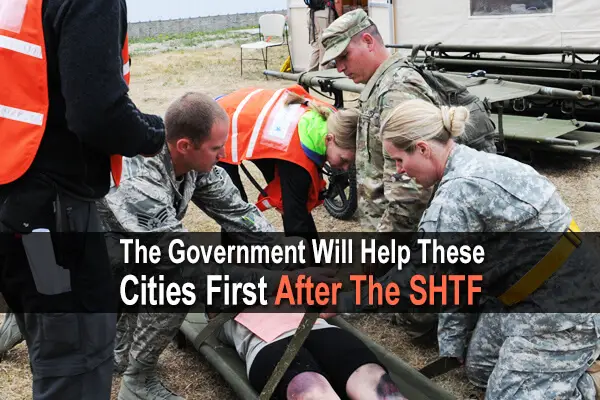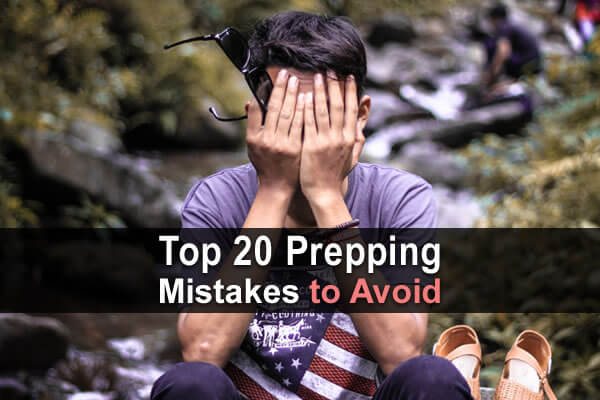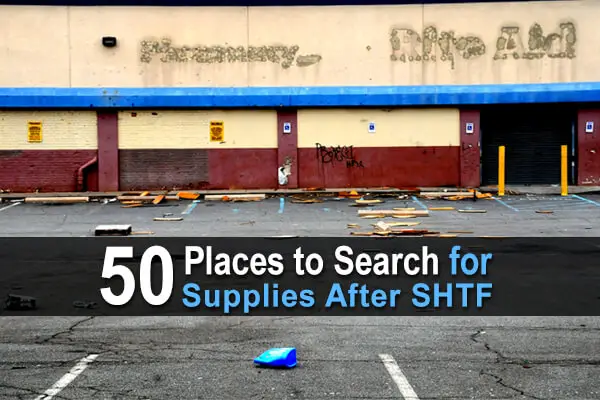Ready-Made Survival Meals That Actually Taste Good is courtesy of http://www.totalsurvival.net/
Finding the best ready-made meals isn’t always easy. With so many on the market, it can be hard to know which ones will actually taste good. So, we’ve put together a list of some of the best ready-made meals out there, both for outdoor activities and survival preparation.
The Best Ready-Made Meals
The best ready-made meals are more than just bare sustenance. Sure, nutrient bars and bare gruel might keep you going, but when SHTF you’re still going to need a decent meal every so often. That’s what this list is for. These ready-made survival meals are among the best you’ll find, whether for weekend camping trips or for survival preparation.
Bear in mind that we’ve decided to mostly steer clear of bulk long-term storage options, as they’re a whole world of their own. This list also excludes homemade survival meals, so once you’re done stocking up on the best-packaged food, consider checking out DIY options. Making your own granola is easy, or try our recipe for Civil War fire cakes.
Lastly, while we’re limited to commercially available ready made survival meals, we’ve tried to include something for every taste. There are freeze-dried hiking pouches, MREs, and even some surprisingly good alternatives to the average pack of ramen. To top things off, we've even included dessert.
Admittedly, with so many ready-made options available, it was difficult to narrow down our list to just a few top picks. In general, meals were selected based on a mix of nutrition, value for the money, and just plain old taste. See what you think, by checking out the list below:
Mountain House MCWs: Ready-Made Meals with Variety
It’s pretty hard to talk about the best ready made meals without mentioning Mountain House (and yes, their products will appear again). These guys often top the list with their freeze-dried ready-mades and are extremely popular among hikers in particular.
The reasons are obvious: they’re easy to use, super light-weight and don’t take up much space in your pack. Best of all, they offer a great variety of fairly good tasting ready-made meals. Their line of cold weather meals (MCWs) are marketed as military grade. The company says it produces them for the US military, and that certainly doesn't surprise. Their line of MCWs come in a variety of flavors good enough to satisfy a platoon or two. Some highlights include the Turkey Tetrazzini, breakfast skillet and the beef stew.
On the downside, their ready-made survival meals with rice can come out a bit gluggy, such as the Mexican rice and chicken. Nonetheless, that’s to be expected among even the best ready made meals, so don’t let it bother you too much. Overall, at around $12 a pack, Mountain House MCWs are good value given the quality.
Personally, I recommended stocking up on a mix of flavors, and rotating them so they don’t get boring. Including the varieties mentioned above, there’s 12 to choose from in total. So even if you don’t happen to like one or two, at least you know you won’t have to eat the same meal again for nearly two weeks! Check them out here.
Augason Farms Freeze Dried Beef Chunks: Ready-Made Meal With Serious Meat
Arguably Mountain House’s toughest competitor in North America, Augason Farms has a fairly good line up of freeze dried ready-made meals, not to mention single ingredient pouches. However, they’re at their best when it comes to their freeze dried beef chunks, which make a great addition to any ready-made survival meal. Sure, they’re never going to compete with a choice cut fresh off the barbecue, but they’re certainly not bad.
I like to throw these beef chunks in with a simple stew, and eat it straight from the pot with some bread rolls. On a cold night in the middle of nowhere, it’s a five star meal. The only one problem is that the smallest pack is 1 lb (454 g), which sells for around $60. In other words, these beef chunks are extremely expensive, and perhaps best suited for groups or long term storage. See for yourself here.
French RCIR Varieties
It’s French, so you know it has to be good. In the world of ready to eat combat rations (MREs), the French have reigned supreme since the days of Napoleon. During international operations, the French Combat Ration Individual Reheatables (RCIRs) are highly prized.
For example, according to internet rumors, a single crate of RCIRs trades for an entire US field cot, which is apparently a big deal. That’s just one of the many legends surrounding the RCIR; another being the persistent rumor that they come with a small bottle of French wine. While that sounds awesome, it’s unfortunately not true.
Instead, you’ll have to settle for the likes of duck paté, stewed lamb, sauteed rabbit and pork cheek ravioli. The menu varies considerably depending on the specific model, but almost all are astonishingly good. Find out more here.
Italian RVSdC
Not to be outdone by the French, Italy puts up one hell of a fight with its combat rations, the Razione Viveri Speciale da Combattimento (RVSdC). The RVSdC varieties typically come with a good mix of meat, fruit bars and enough coffee to keep you running all day long. However, the RVSdC’s real claim to fame is its' shot of booze. For novelty alone, the RVSdC is worth trying.
Backpacker's Pantry: Ready-Made Meals with Flavor
Backpacker’s pantry is a pretty common sight on hiking trails, and for good reason. Their line of ready made meals is a few notches above run-of-the-mill ramen noodles. The chana masala and Cuban coconut bean and rice mixes are both pretty flavorsome, while the Southwest corn chowder isn’t bad either.
However, if you really can’t live without your noodles, don't panic. Backpacker’s Pantry offers a fantastic ready-made pad thai. Admittedly, it’s not exactly up to Bangkok standards, but it’s the best Thai food you can get in the middle of the wilderness. At the very least, it’s a welcome change from instant ramen. Check out all Backpacker’s Pantry ready-made meals here.
MaryJanesFarm Organic Shepherd's Meat Pie: It’s ready made shepherds pie!
Ever since I was a child, I’ve had a bit of a soft spot for shepherd’s pie. Admittedly, MaryJanesFarm’s organic shepherd’s pie isn’t quite how Mom used to make it, but it’s not terrible either. For one, it’s the only shepherd’s pie I’ve found that can be eaten straight from the bag.
Just pour in some hot water, wait a few minutes, and you’ve got a mush that tastes reasonably good. You can tell it is made with real meat potatoes, not to mention a generous amount of cheese. It’s not bad, and REI sometimes has packs on special deals. Have a look here.
H2 Mi Goreng: Yes, it’s a Ready Made Meal in its Own Right
As an Australian, I’d probably be charged with treason if I didn’t mention this next one. Indomie’s mi goreng noodles are a staple diet for all Australian university students and proof that instant noodles can be a genuinely good meal in their own right.
Americans, forget what you think you know about noodles. Mi Goreng isn’t just a square of noodles with one lousy sachet of chemical flavoring. Instead, it’s a square of noodles with one lousy sachet of extremely addictive chemical flavoring, plus soy sauce, oil and even a little pack of fried shallots. They’re designed to be dry noodles, so either strain them or boil in just a little water. Either way, they’re incredible.
Mi Goreng is easy to find if you happen to be in Australia, New Zealand, some parts of Indonesia and (for some reason) Nigeria. In North America, you can try Asian specialty stores, but you’re probably better off ordering them online. While you’re at it, check out Indomie’s other flavors as well. The soto mie, barbecue chicken and rendang are all worth your time, while the other flavors are nothing to write home about.
NongShim Shin Ramyun: Now That is Spicy!
While we’re in the noodle department, let’s talk about NongShim’s Shim Ramyun. Again, we’re talking instant noodles, so skip ahead if you don’t think this counts as a ready-made meal. These chunky noodles are designed to be eaten in their steaming hot broth.
Without doubt, this broth is the single most flavorsome item on this list. It’s spicy, rich with flavors of kim chi and chili. You also get a little sachet of dried Asian vegetables. If you’re not into spicy food, then you’d better avoid Shin Ramyun. In terms of cost per serving, I’d say it’s perhaps the best ready-made meal available. You can buy it online here.
Good To-Go Thai Curry: A Ready Made Curry with Flavor
If you happen to have a taste for Asian food, but don’t want to eat instant noodles all day, then I’d suggest having a look at Good To-Go’s range. They’re a relatively small Maine-based company mostly aimed at the hiking crowd, but also appealing to survivalists as well.
I recommended their Thai curry; it’s a spicy coconut curry mix that’s easy to toss into an overnight pack. Find it here. Alternatively, their smokey three bean chili is also extremely good. While the Thai curry contains fish, the three bean chili happens to be completely vegan.
Augason Farms Stew Blends: Ready Made Meals to Stew Over
Augason Farms provides one of the better stews for long term storage. Their vegetable stew blend is surprisingly good, especially given the price. For around $20, you can get 40 servings of decent stew.
It tastes fine, but the consistency might need adjusting, depending on your personal preference. I personally find it a bit thick, and usually add more water than advised. Also, I’d steer clear of their chili cheesy enchilada mix if I were you..
As with all Augason Farms products, you can save a lot by buying in bulk from their website.
Augason Farms Taco Flavored Vegetarian Meat Substitute
Vegetarians will be happy to know that Augason Farms has a good meatless option. The taco meat substitute is noticeably better than Augason’s other foray into Mexican food, and is a good addition to soups and stews. Have a look here.
Mountain House Freeze Dried Desserts: Prepare to Have Your Mind Blown by These Epic Ready Made Desserts!
I’ve saved the best for last. I hinted that Mountain House was going to make another appearance, but did you expect dessert? Most survivalists tend to neglect dessert, as if a sweet treat at the end of the day is supposedly only for snowflakes.
Well, call me a snowflake, because frankly, a good dessert can do wonders to lift spirits after a rough day. It’s for this reason that I consider Mountain House’s line of freeze dried desserts among the best ready-made meals out there. The New York style cheesecake bites are reasonably good, while the raspberry crumble pouches are enjoyable.
However, the ice cream pouches really take the cake. These pouches don’t need to be frozen, thanks to the un-meltable ice cream within. Believe it or not, the icecream actually tastes like…well, ice cream.
To make best use of Mountain House desserts, I suggest making sure everyone in your group has either the ice cream or one of the (raspberry or apple) crumbles. With a bit of trading, everyone can have a slither of crumble with a side of ice cream. So what are you waiting for? Get yourself over to their website, and stock up on survival ice cream.
Got any good, ready-made meals of your own? Let us know in the comments below.
This Article Was First Found at survivallife.com
Read The Original Article Here
Original Post Here: Ready-Made Survival Meals That Actually Taste Good




 This article first appeared on urbansurvivalsite.com
This article first appeared on urbansurvivalsite.com 









